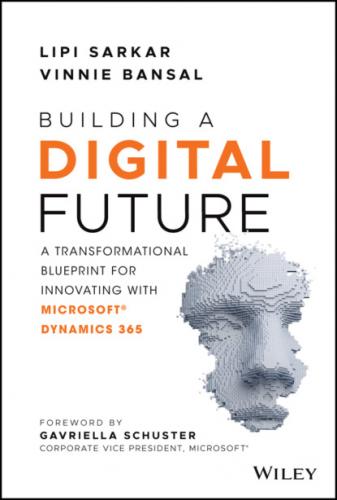Customer Insight Continues to Be Essential
There is more competition than ever before and the ability to respond quickly to consumer demands starts with a strong emphasis on customer data. Due to advancement in technology, analytics, and machine learning, businesses have access to a significant amount of data, but having data does not mean companies will have an insight! Understanding customer behaviors, their pattern and perception, becomes key to provide an exceptional personalized customer experience. To do so, businesses need to cultivate consumer insight, and gather insights through more profound research, and leverage it to gain a unique advantage over their competition.
AI Is Front and Center
AI is in the front and center of businesses, and using customer insights is the key to the success of companies and the way forward for digital transformation. AI is becoming the fastest emerging priority, inspired by the increasing popularity of “conversational” interfaces like Siri and Alexa. AI strategy is a must for businesses to survive; interpretation of AI was limited to science fiction but now it is at the center of business strategy.
AI Systems consist of five key components.
1 Detection. Components receive inputs such as text, voice, image, video, or data triggers from systems.
2 Understanding. Components that recognize what the data means (e.g., converting the speech to text and even the underlying semantic meaning).
3 Analysis. Components use algorithms (rules) and data sets to get an informative answer or act.
4 Orientation. If required, the system checks with people for the certainty of the correct answer.
5 Action. Action could be an answer to the user or taking an automatic reaction, sending a message, paying an invoice, or even firing a rocket. To make an action meaningful, the underlying data is important.
Businesses expect the users to interact through websites and apps. However, this behavior is changing now and it will further change significantly in future. User interfaces are becoming AI interfaces where inputs and outputs are in a natural language and systems are making predictive/proactive decisions on behalf of the users, where tolerance of errors is low. For example, in conversational banking, users are even getting used to conversational interfaces to manage their money.
Ramshanker Krishnan, General Manager, EMEA Azure Cloud and AI, Microsoft Consulting Services, Microsoft
“Transformation is about creating a customer-centric culture, an agile technology platform and a data-driven business. The issue most organizations will be facing, with a black swan event like the COVID-19 pandemic, is a loss of signals or need for new ones to be captured. Digitally mature organizations will have a clear advantage, as recalibrating their existing systems to the new signals will be a lot faster than creating an entire system to capture and process signals. Data will continue to be at the center of Digital Transformation and leveraging the innovations around ERP and CRM can help speed up the transformation journey.”
Digital Transformation Facts
To better understand the impact of digital transformation on business, here are some key statistics:
27% of executives now see digital transformation as a matter of survival.2
A third of the leading marketing leaders in emerging markets believe that their company will become known as a digital company in five years.
Digital-first companies are 64% more likely to achieve their business goals than their peers.3
51% of executives believe it is important to implement digital transformation in the next 12 months.
71% of digitally mature companies say they can attract new talent based on their use of data, compared to 10% of early-stage digital companies.4
89% of all companies have already adopted a digital-first business strategy or plan to do so.5
The top industries for digital-first business and strategies are services (95%), financial services (93%), and healthcare (92%).6
Nearly half of all companies say improving customer experience and customer satisfaction were the leading influences to start a digital transformation.7
Only 5% of companies are doing all it takes to get to payback from digital. To thrive, not just survive, they will need to navigate the maze of economic uncertainty and the breakneck pace of digital.
Digital Transformation: Disrupt or Be Disrupted
In most cases, companies use digital technology to counter the disruption of their businesses by competitors, existing or start-up, or use the same digital technology for the purpose to disrupt or create markets they are not operating in. Through the development of new business models, while utilizing digital technology, they gain a bigger market share, reduce costs, simplify the way of doing business, and most of all improve customer satisfaction and engagement. This sounds simple, and it is something every business owner is striving for.
Digital transformation, however, according to Harvard Business School Professor Clayton Christensen,8 is “widely misunderstood” and commonly applied to businesses that are not “genuinely disruptive.”
Just look at the Fortune 500 list, where at least half of the companies have been replaced by new digital business model organizations since 2000. This does not mean they folded up shop. It just shows that they were bypassed by those organizations that were able to adapt and/or create a completely new business model in addition to their existing core business.
We are in the fourth industrial revolution, and it is not limited to just industries. It is a service revolution across all the sectors, and it is evident with plenty of casualties in the business world, filing of bankruptcies by iconic brands like BHS, Poundworld, Toys R Us, Thomas Cook, Roberto Cavalli, and the list is endless.
There is a growing list of start-ups with unicorn status (start-ups valued at over a billion dollars or more), and these businesses build by disrupting traditional businesses through technology (e.g., WeWork, Airbnb, WeChat). As referred to in Figure 1.1, businesses need to innovate and transform business models and also transform the technology ecosystems.
Phases of Digital Transformation
It is clear that businesses should either disrupt or be disrupted, and there is no single solution that fits all for the successful digital transformation; the best results are
